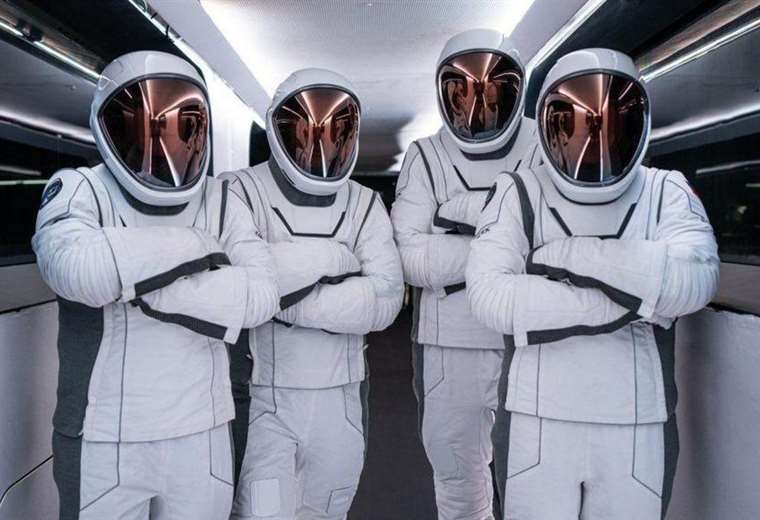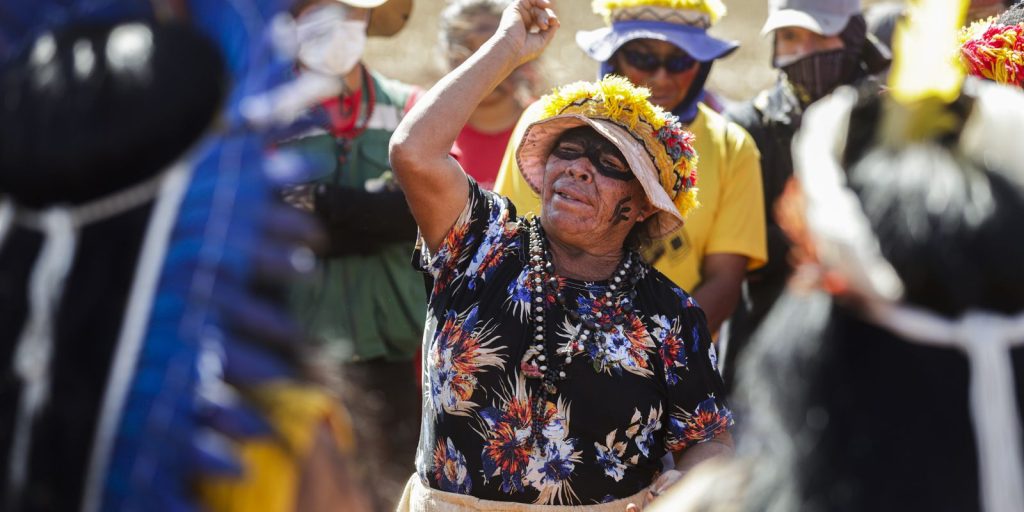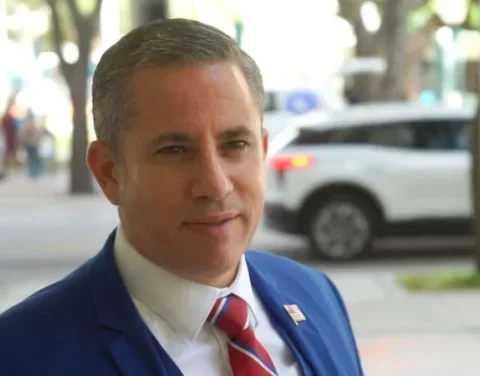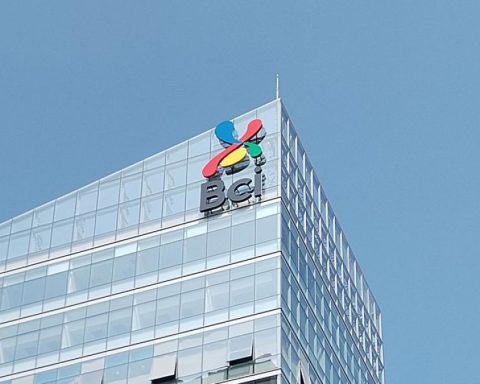September 11, 2024, 7:02 AM
September 11, 2024, 7:02 AM
The private space mission Polaris Dawn was successfully launched this Tuesday from Florida powered by the SpaceX Falcon 9 rocket.
The billionaire travels in it Jared Isaacmanfounder of the payment processing company Shift4, who hopes to conduct the first privately funded spacewalk in the coming days.
Also aboard the ship are Scott “Kidd” Poteet, a retired Air Force pilot, and two SpaceX engineers, Anna Menon and Sarah Gillis.
The spacecraft, called Resilience, will enter orbit 1,400 km above Earth. No human has traveled this far since NASA’s Apollo program ended in the 1970s.
Astronauts will traverse a region of space known as Van Allen Beltwhich has high levels of radiation, but the crew will be protected by the ship and their recently modernized spacesuits.
Going through the belt a few times will expose them to equivalent of three months after radiation experienced by astronauts on the International Space Station, which is within acceptable limits.
The goal of the trip is to study the effects that relatively short but safe exposure to radiation has on the human body.
The crew will spend their second day in space at their highest altitude, conducting up to 40 experiments, including inter-satellite laser communication between the Dragon spacecraft and Space X’s Starlink satellite constellation.

It will break a record
If all goes according to plan, on the third day of the mission, Isaacman and Sarah Gillis are expected to attempt the first privately funded spacewalk, which will last two hours.
This will be done while 700 kilometers (430 miles) into orbit. The astronauts will test new extravehicular activity (EVA) astronaut suits, which, as the name suggests, have been upgraded from Space X’s intravehicular activity (IVA) suits to work outside the spacecraft.
A unique aspect of the spacewalk is that the craft It has no airlockwhich is a sealed chamber between the gateway to the outer vacuum and the rest of the ship.
Normally, the airlock is depressurized before astronauts enter and exit, but in the case of Resilience, the entire spacecraft will have to be depressurized and astronauts will have to be fully equipped even if they do not leave the ship.
This has been adapted to withstand the vacuum. Additional nitrogen and oxygen tanks have been installed and the four astronauts will wear EVA suits, although only two will leave the ship. Thus, the mission will break the record for the largest number of people in the vacuum of space at the same time.
The flight team will use the mission to conduct tests on the impact of decompression sickness, as well as the blurred vision that astronauts can sometimes experience in space, called spaceflight-associated neuro-ocular syndrome.
The Van Allen Belt radiation impact tests and spacewalk are intended to lay the groundwork for future high-altitude private-sector missions, possibly to the Moon or Mars.
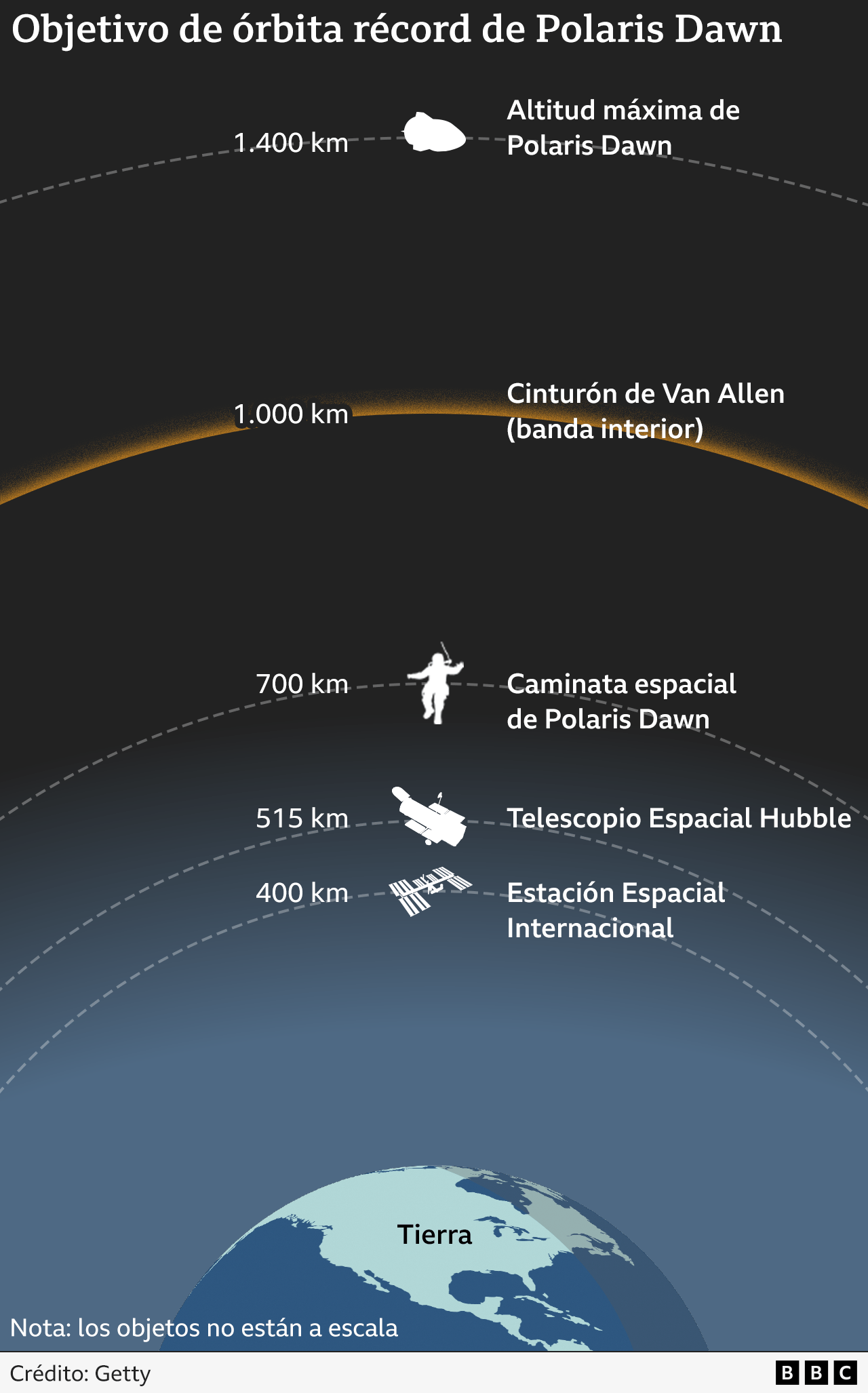
The new suits
The EVA suit incorporates a helmet display that provides information about the suit while it is being used. EVAs are comfortable and flexible enough to be worn during launching and landing.eliminating the need to have separate VAT suits.
In an interview conducted while training for the spacewalk, Gillis explained that these were a necessary part of Space X’s plans to send people to other planets.
“So far, only national missions have been able to perform a spacewalk. Space X has a huge ambition to reach Mars and make life multi-planetary. To achieve this, we have to start somewhere. And the first step is to test the first interaction with the EVA spacesuit so that we can further improve spacewalks and future suit designs.”
Isaacman echoed this sentiment: “Space X knows it needs EVA capability if it wants to realize its long-term dream of one day populating another planet.”
The goal is for spacesuits not to be a tailor-made garment, but to accommodate a wider range of commercial astronaut shapes and sizesin order to reduce costs as manned spaceflight becomes more widespread.
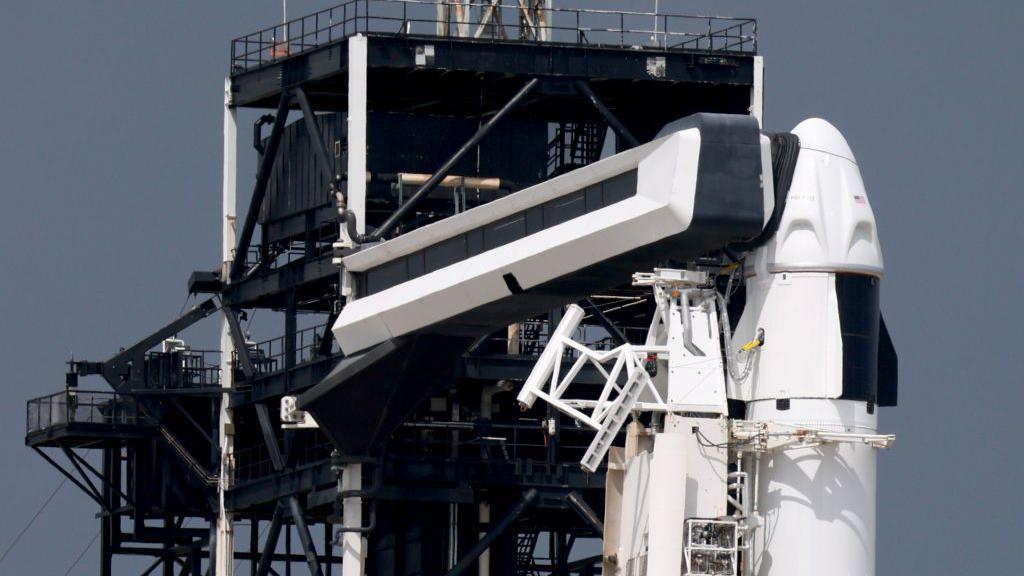
“Many risks”
“It feels like There are many risks“We’re not going to be able to do that,” Dr Adam Baker, a rocket propulsion specialist at Cranfield University in England, told the BBC.
“They have set themselves many ambitious goals and their experience in spaceflight is relatively limited. On the other hand, they have spent several thousand hours simulating the mission. So they are doing everything they can to mitigate the risks,” the expert said.
If the mission is a success, some analysts believe it will spark ever-larger, lower-cost private-sector missions that will take more people farther than government space agencies have ever done.
But Baker is more cautious.
“So far, the private sector has spent a lot of money, done a lot of advertising, but the number of people who have traveled to space and returned (on these missions) has been far less than 100.”
“Spaceflight is difficult, expensive and dangerous, so expecting to see large numbers of even wealthy civilians flying into space anytime soon, or to be among them, is unlikely.”
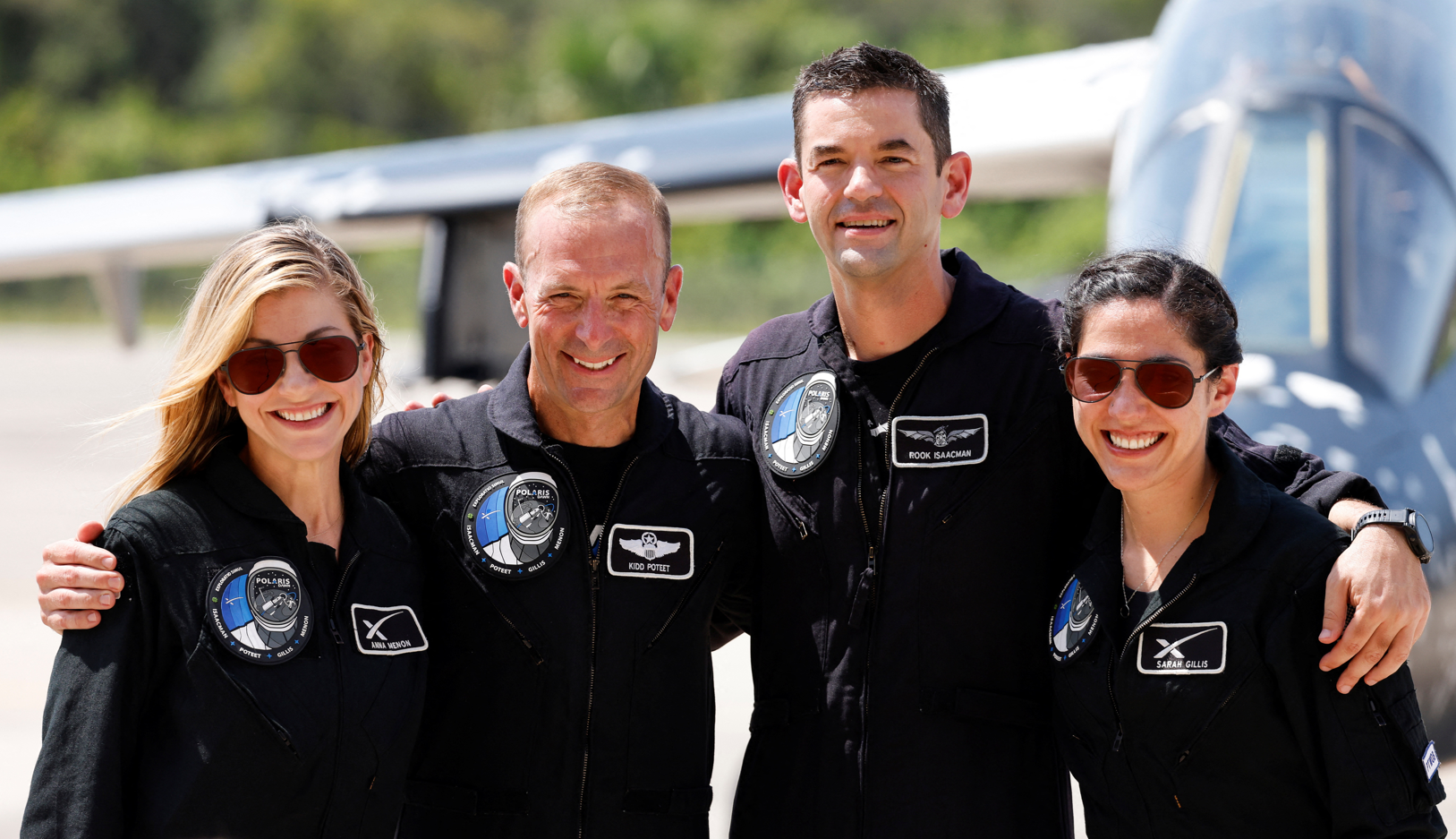
A question of the rich?
For some, the idea of billionaires paying to go to space is in bad taste and questions arise about a mission in which The person who pays for the trip is also the commander.
Simeon Barber, a space scientist at the Open University in England who develops scientific instruments for spacecraft in projects funded almost exclusively by governments, says it is not a matter of vanity.
“Isaacman is actually the most experienced astronaut on the crew – he is the only one who has been in space before, on another self-funded mission with SpaceX, where he also served as commander. In the context of the mission, he is the natural choice,” he told BBC News.
“More broadly, the profits from the sale of this star-class ticket will stay on Earth: the money will buy materials and services, pay salaries, and in turn generate taxes. Not to mention the charitable funds that the mission will raise.”
He says many in the space sector believe that the involvement of wealthy individuals It is a positive thing.
“If they want to venture off-planet, and someday go to the Moon or even Mars, that will create opportunities to do science along the way. And the more diverse the reasons for exploring space, the more resilient the program will be.”

And remember that you can receive notifications in our app. Download the latest version and activate them.
